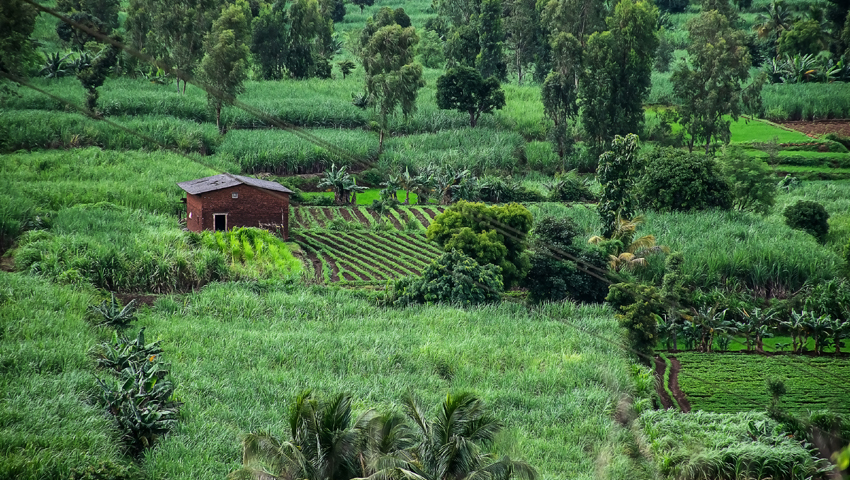ON A recent Climate Water Project podcast, Alpha Lo spoke to Andrew Millison about India’s Regenerative Water Revolution.
Millison is a permaculture teacher and practitioner working with Oregon State University. Millison’s water and permaculture videos are exceptionally popular on YouTube, making him one of the most well known permaculture teachers in the world today. In 2017, he embarked on a two month pilgrimage to look at water systems in India, which resulted in a series of videos titled “India’s Water Revolution”.
This article by Alpha Lo sets the scene for a fascinating discussion.
UNLIKE in the US with its winter rains, the monsoon comes in the summer in India. In the state of Maharashtra, as the month of June approaches, the hot air becomes pregnant with humidity. Wild and powerful winds, blowing in from the oceans south east, will then, over the course of the next few months, dump its rains on the lands.
To Indians the rains mean creativity and a source of new beginnings. They have gods to the rain. They play in the rain. Rain infuses into their politics and their education system.
India is a land of 1.4 billion people where two thirds of them live rurally. In Maharashtra, heavily dependent on agriculture, the rains are a measure of success for the community and for the economy. When the droughts hit Maharashtra, the effects were devastating. Fights broke out at community wells, farmers committed suicide, and villagers, unable to support themselves, moved to the big cities.
The Paani Foundation, an organization that included the Bollywood star Aamir Khan, set out to see what they could do about the water crisis. They discovered that one village, Hiware Bazar, had succeeded during these times, continuing to produce bountiful food and vegetation within a thriving watershed. The village, covering an area of about two thousand plus acres, has forested slopes, ponds, and contour trenches which caught the rain during monsoon season to store it for the dry season. There was measurably more rain falling on their village than on neighbouring villages.
In other parts of Maharashtra, overgrazing of the land, and misguided attempts by villagers to cut down trees – because they thought it robbed the fields of fertilizer – had left the land unable to absorb the monsoon rains.
The Paani Foundation decided to spread the ways of Hiware Bazar to other villages in Maharashtra.
Explaining earthworks, a way of terraforming the land, was key. The villages were taught to dig Continuous Contour Trenches, which are similar to the swales of permaculture. They learnt to build check dams with rocks, which would slow and redirect the monsoon rains as it flowed down the landscape. Some of the rainwater would be funnelled to ponds with liners that stored the water so that it could be used during dry season. Rainwater would also be funnelled to ponds without liners so that it would seep down to fill the aquifers. The water table would rise to give the villagers more well water. Summer monsoon water was transferred across time, aided by villager built earthworks and rising aquifers, to provide for the village in the rain-scarce months.
Replanting trees and growing soil in these villages would also be key to slowing, sinking, and spreading the storm waters so that it could hydrate the landscape.
The Paani Foundation organized a Water Cup competition between the villages to see who could improve their watershed the most, and over 8000 villages participated. The results were astonishing. Landscapes were transformed, crops flourished, and the drain of people to the big cities was lessened.
In the Pemgiri area in Maharashtra, where there are many villages, each with a size of about 2000 acres each, those areas that had trees and greenery, had noticeably more rain, than those areas which remained denuded.
Rajendra Singh, who comes by the cool moniker, Water Man of India, has said that in areas with mountains or plateaus to partially block the wind, an area of 600-2000 acres is enough to create more rain. In flat areas one needs about 60 square kilometres to start generating rain.
After four years of success with the Water Cup, the Paani Foundation has now organized a Farmers Cup, where villages are taught how to grow rich soil and healthy plants. Its a friendly competition to see who can grow the best organically.
This is a story of a communal water methodology in a village – Hiware Bazar, that became a state-wide movement – in Maharashtra, that became known around the world – through Andrew Millison’s videos. Maybe it can become a world-wide movement. Maybe some of you can help.
Find out more about the Climate Water Project
Listen to the podcast, India’s Regenerative Water Revolution
